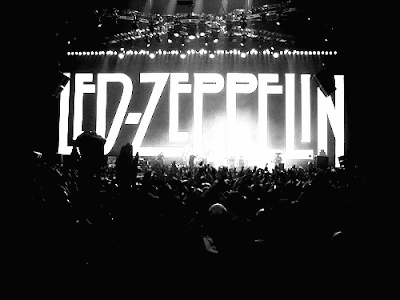OH, LET THE SUN
BEAT DOWN
UPON MY FACE
WITH STARS TO
FILL MY DREAMS

Physical Graffiti
is the sixth
studio album
by the
English Rock band
Released as a
double album
on
February,24th 1975
in the United States
and on
February,28th 1975
in the United Kingdom,
it was the group's
first album
to be released
under their new label,
Swan Song Records.
The band wrote
and recorded
eight new songs
for the album
in early 1974
at Headley Grange,
a country house
in Hampshire,
which gave them
ample time to
improvise arrangements
and
experiment with recording.
The total playing time
covered just under
three sides of an LP,
so they decided to
expand it into a
double album
by including
seven previously
unreleased tracks
from the sessions
for the band's
earlier albums
Led Zeppelin III
(1970),
Led Zeppelin IV
(1971)
and
Houses of the Holy
(1973).
The album covered
a range of styles
including hard rock,
progressive rock,
rock 'n' roll
and folk.
The album was then
mixed over summer 1974
and planned for an
end-of-year release;
however,
its release was delayed
because the
Peter Corriston-designed
die-cut album cover
proved difficult to
manufacture.
Physical Graffiti
was commercially
and critically successful
upon its release
and debuted at
number one
on album charts
in the UK
and number three
in the United States.
It was promoted by
a successful U.S. tour
and a
five-night residency at
Earl's Court, London.
The album has been reissued
on CD several times,
including an
expansive
40th anniversary edition
in 2015.
Physical Graffiti
was later certified
16× platinum
in the United States
by the Recording Industry
Association of America
(RIAA)
in 2006,
signifying shipments
of over
eight million copies
in the US.

Recording
The first attempt by
Led Zeppelin
to record songs for
Physical Graffiti
took place in
November 1973
at Headley Grange
in Hampshire, England,
where they had
previously recorded
their untitled fourth album.
The recording equipment
consisted of
Ronnie Lane's Mobile Studio.
Guitarist and producer
Jimmy Page
and drummer
John Bonham
recorded an
instrumental which was
later reworked as
"Kashmir"
during this visit.
However,
these sessions came
to a halt quickly
and the studio time
was turned over to
Bad Company,
who used it to
record songs
for their debut album.
The press reported that
bassist/keyboardist
John Paul Jones
was ill
and unable to record.
However,
he had become disillusioned
with the group
and tired of touring,
and told manager
Peter Grant
he was considering quitting.
Grant asked him to
reconsider and to
take the rest
of the year off
to recuperate.
The group reconvened at
Headley Grange
in January and February 1974,
where they recorded
eight tracks
engineered by
Ron Nevison.
Lead singer
Robert Plant
later referred to these
eight tracks as
"the belters,"
including
"off-the-wall stuff
that turned out really nice."
As with
previous sessions
at Headley Grange,
the informal atmosphere
allowed the group to
improvise and
develop material
while recording.
Sometimes the group
would rehearse or
record a
track several times,
discuss what went wrong
or what could be improved
and then realized
they'd worked out an
alternative arrangement for it
which was better.
Bonham was a
driving force
at the sessions,
regularly suggesting ideas
or the best ways
in which a
complicated arrangement
could be played successfully.
This led to him
getting a
lead songwriting credit
on several tracks.
The eight songs
extended beyond the length
of a conventional album,
almost spanning
three sides of an LP,
so the group decided to
create a double album,
adding material they'd
recorded for
previous albums
but never issued.
The band was also
working on a
track titled
"Swan Song",
with instrumental portions
recorded during the
Physical Graffiti sessions
in 1974,
with plans to add lyrics.
The song was
ultimately left off the album,
but Page wanted to
revisit it,
and his
1980s band
The Firm
recorded a version
of it called
"Midnight Moonlight".
The original track
was never released,
but can be heard in
various bootlegs
TRACKLIST
CD 1
(Remastered)
Custard Pie
The Rover
In My Time of Dying
Houses of the Holy
Trampled Under Foot
Kashmir
CD 2
(Remastered)
In the Light
Bron-Yr-Aur
Down by the Seaside
Ten Years Gone
Night Flight
The Wanton Song
Boogie with Stu
Black Country Woman
Sick Again
Kashmir
(Remix)
Behind the Recording of
'Physical Graffiti' [*]
CD 3
Brandy & Coke
(Trampled Under Foot; Initial / Rough Mix)
Sick Again
(Early Version)
In My Time of Dying
(Initial / Rough Mix)
Houses of the Holy
(Rough Mix with Overdubs)
Everybody Makes It Through
(In the Light; Early Version / In Transit)
Boogie with Stu
(Sunset Sound Mix)
Driving Through Kashmir
(Kashmir Rough Orchestra Mix)
The Rover
(Backing Track With Vocals)
Kashmir
(Just Vocals)



No comments:
Post a Comment